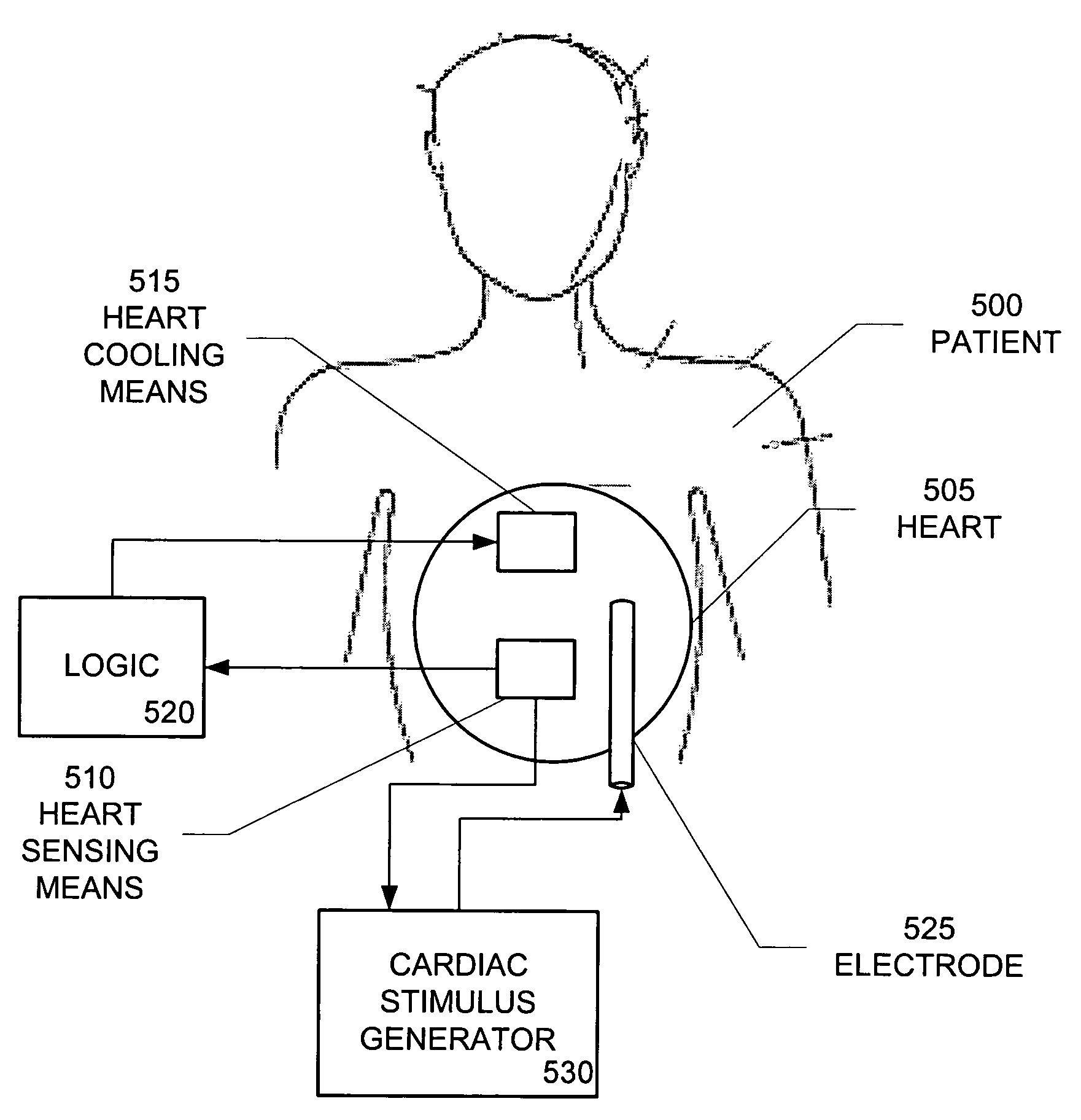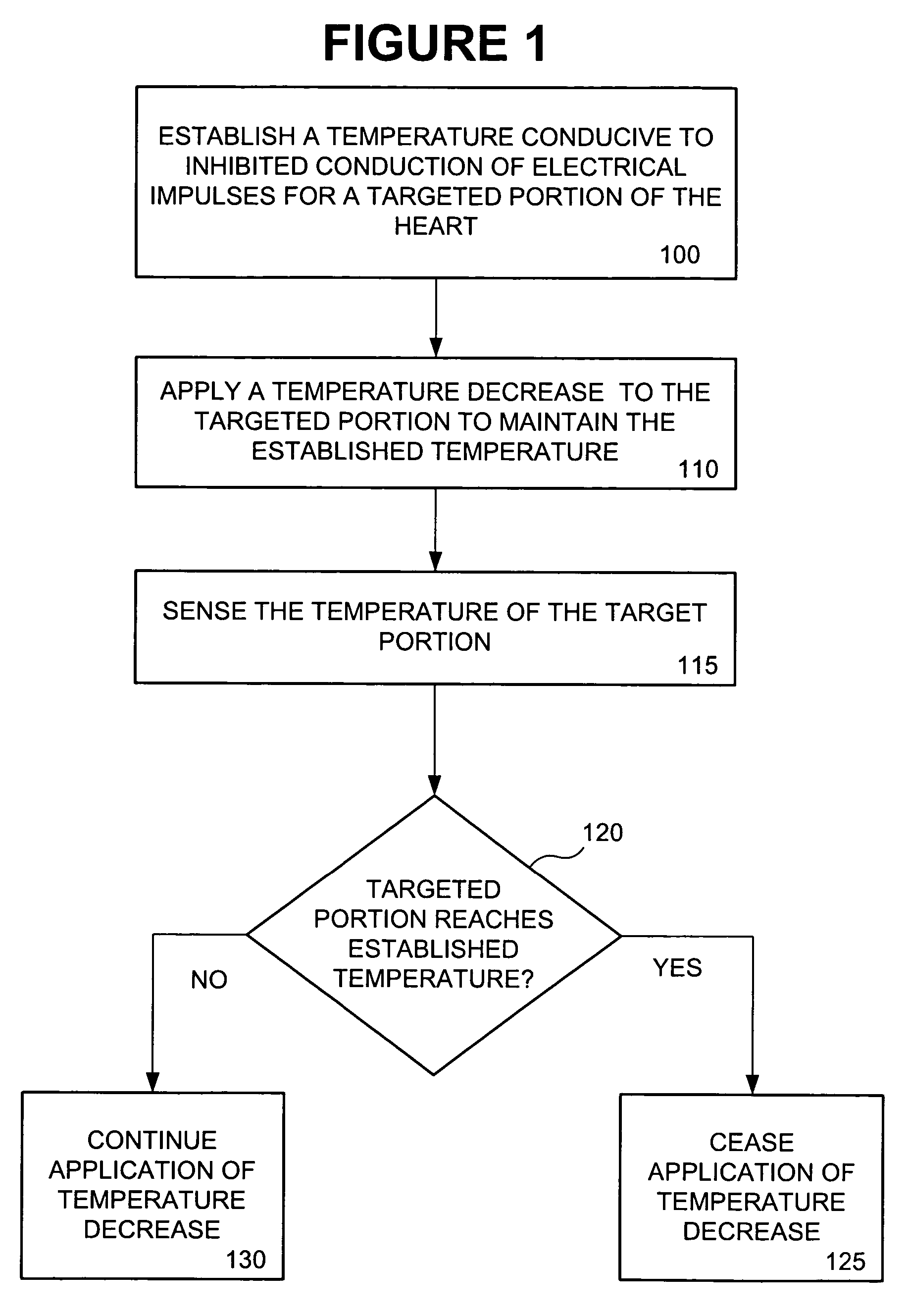System and method for breaking reentry circuits by cooling cardiac tissue
a technology of reentry circuit and cooling circuit, which is applied in the field of system and method, can solve the problems of destroying the circuit, tachycardia or abnormally slow (bradycardia) heartbeats, cell irreversible changes, etc., and achieves superior cardiac contraction, faster impulse conduction, and enhanced cardiac contractility.
- Summary
- Abstract
- Description
- Claims
- Application Information
AI Technical Summary
Benefits of technology
Problems solved by technology
Method used
Image
Examples
Embodiment Construction
[0056]Embodiments of the present invention provide systems and methods for treating cardiac tissue by cooling the cardiac tissue to inhibit the conduction of certain electrical signals in cardiac tissue and decrease the duration of tachycardia and enhance the effects of pacing and defibrillation stimuli. In the description of these embodiments, reference is made to sensing a “symptom” indicative of a condition of the heart that may be treated by application of the present invention. For the purpose of the present invention, the term “symptom” is used broadly to encompass any sign or indication of such a condition that can be detected through direct or indirect sensing of physiological parameters.
[0057]An embodiment of the present invention comprises an implantable cardiac treatment / stimulation device designed to inhibit the conduction of spurious electrical signals in cardiac tissue without pacing. The technique applied in the implantable device comprises a cooling element for cooli...
PUM
 Login to View More
Login to View More Abstract
Description
Claims
Application Information
 Login to View More
Login to View More - R&D
- Intellectual Property
- Life Sciences
- Materials
- Tech Scout
- Unparalleled Data Quality
- Higher Quality Content
- 60% Fewer Hallucinations
Browse by: Latest US Patents, China's latest patents, Technical Efficacy Thesaurus, Application Domain, Technology Topic, Popular Technical Reports.
© 2025 PatSnap. All rights reserved.Legal|Privacy policy|Modern Slavery Act Transparency Statement|Sitemap|About US| Contact US: help@patsnap.com



